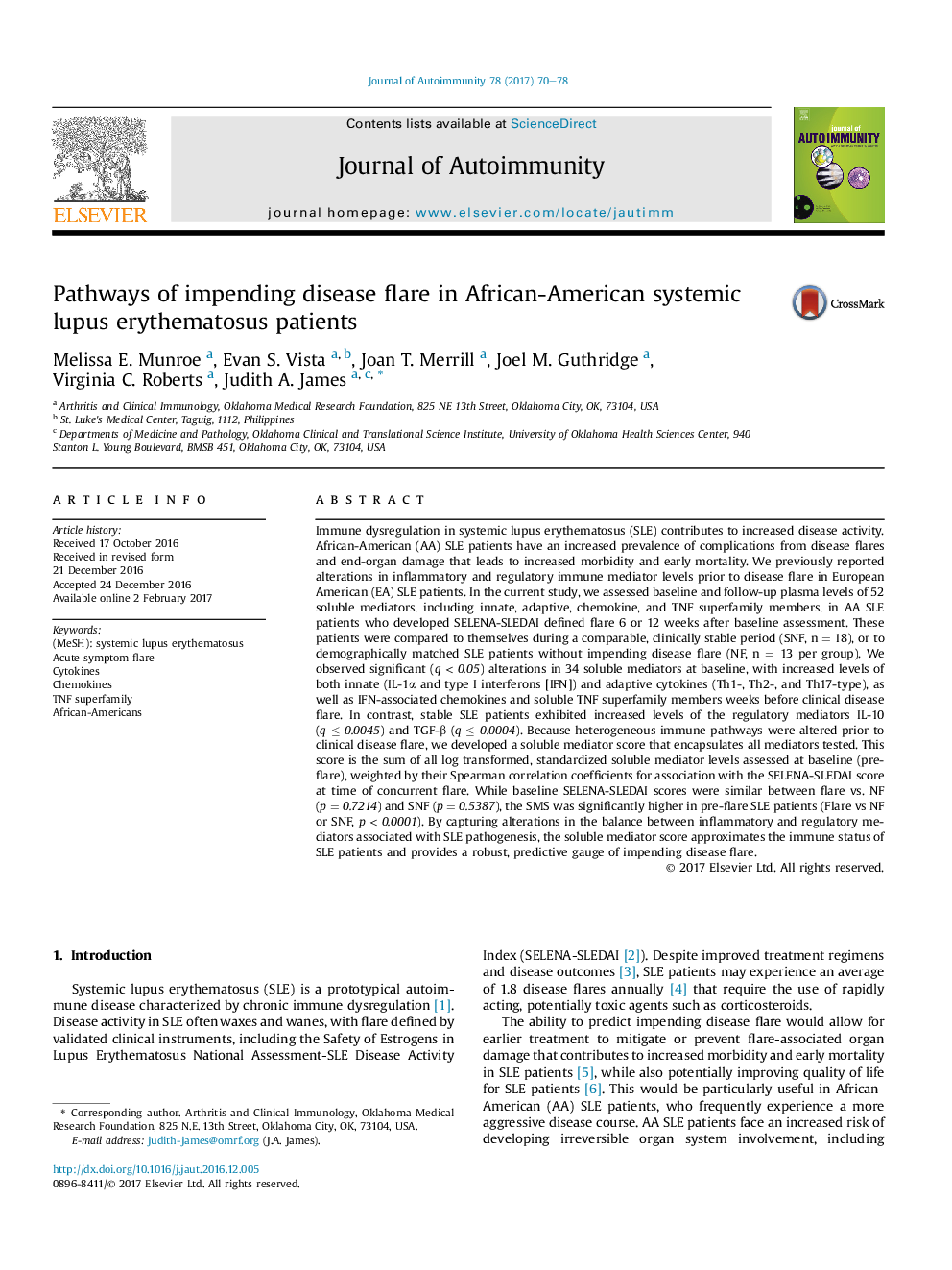| Article ID | Journal | Published Year | Pages | File Type |
|---|---|---|---|---|
| 5667860 | Journal of Autoimmunity | 2017 | 9 Pages |
â¢Multiple immune pathways are dysregulated prior to disease flare.â¢Baseline soluble mediator levels correlate with future disease activity at flare.â¢A soluble mediator score signals impending SLE flare in African-American patients.
Immune dysregulation in systemic lupus erythematosus (SLE) contributes to increased disease activity. African-American (AA) SLE patients have an increased prevalence of complications from disease flares and end-organ damage that leads to increased morbidity and early mortality. We previously reported alterations in inflammatory and regulatory immune mediator levels prior to disease flare in European American (EA) SLE patients. In the current study, we assessed baseline and follow-up plasma levels of 52 soluble mediators, including innate, adaptive, chemokine, and TNF superfamily members, in AA SLE patients who developed SELENA-SLEDAI defined flare 6 or 12 weeks after baseline assessment. These patients were compared to themselves during a comparable, clinically stable period (SNF, n = 18), or to demographically matched SLE patients without impending disease flare (NF, n = 13 per group). We observed significant (q < 0.05) alterations in 34 soluble mediators at baseline, with increased levels of both innate (IL-1α and type I interferons [IFN]) and adaptive cytokines (Th1-, Th2-, and Th17-type), as well as IFN-associated chemokines and soluble TNF superfamily members weeks before clinical disease flare. In contrast, stable SLE patients exhibited increased levels of the regulatory mediators IL-10 (q â¤Â 0.0045) and TGF-β (q â¤Â 0.0004). Because heterogeneous immune pathways were altered prior to clinical disease flare, we developed a soluble mediator score that encapsulates all mediators tested. This score is the sum of all log transformed, standardized soluble mediator levels assessed at baseline (pre-flare), weighted by their Spearman correlation coefficients for association with the SELENA-SLEDAI score at time of concurrent flare. While baseline SELENA-SLEDAI scores were similar between flare vs. NF (p = 0.7214) and SNF (p = 0.5387), the SMS was significantly higher in pre-flare SLE patients (Flare vs NF or SNF, p < 0.0001). By capturing alterations in the balance between inflammatory and regulatory mediators associated with SLE pathogenesis, the soluble mediator score approximates the immune status of SLE patients and provides a robust, predictive gauge of impending disease flare.
Graphical abstractDownload high-res image (167KB)Download full-size image
